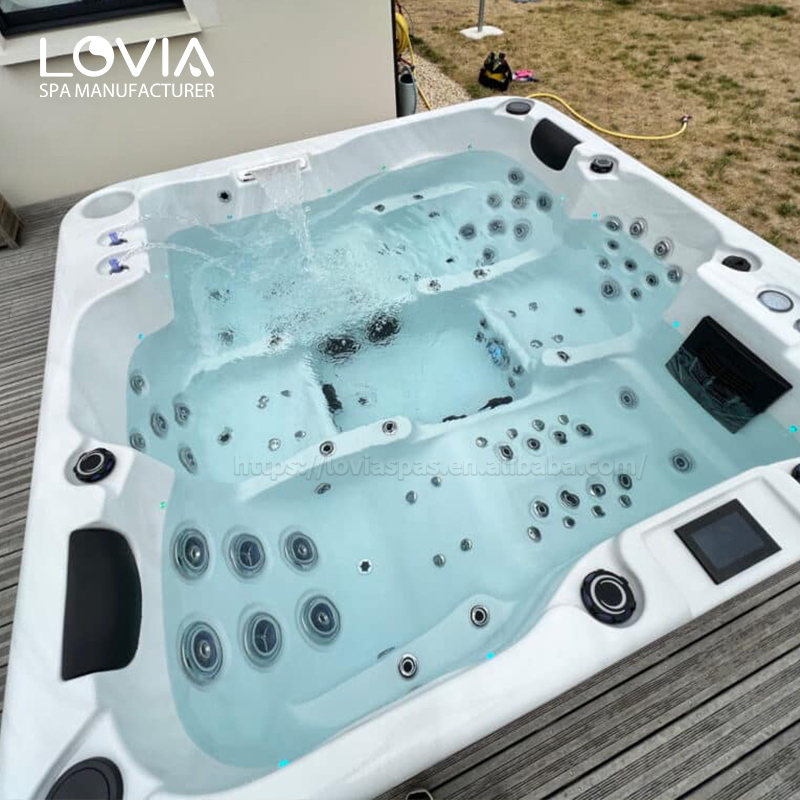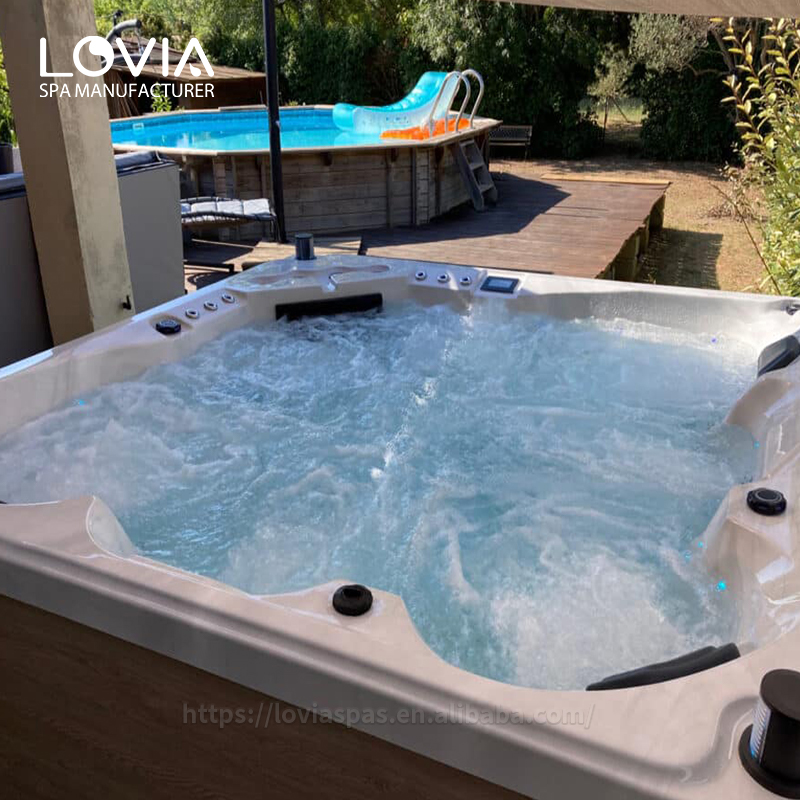
Is a 110V or 220V hot tub better? What are their pros and cons?
2024-06-26 15:30Voltage selection is an important consideration when purchasing a hot tub. Hot tubs on the market are mainly divided into two types: 110V and 220V. Hot tubs of different voltages have their own advantages and disadvantages in installation, use, and performance.
This article will explore the differences between 110V and 220V hot tubs in detail to help consumers make an informed choice.

What are the advantages and disadvantages of 110V hot tubs?
Advantages of 110V hot tubs:
1. Easy installation: The biggest advantage of a 110V hot tub is its ease of installation. It can be directly plugged into an ordinary household 2. power socket, without the need for professional electricians to install, suitable for DIY enthusiasts and people who need quick installation.
2. Lower cost: Since there is no need to modify the circuit or hire an electrician, the installation cost of a 110V hot tub is relatively low. In addition, the initial purchase cost of this type of hot tub is usually more affordable, suitable for consumers with limited budgets.
3. Strong mobility: 110V hot tubs are usually small in size and light in weight, making them easy to move and relocate. This makes them ideal for temporary or rental homes.
Disadvantages of 110V hot tubs:
1. Slow heating: 110V hot tubs have lower power, resulting in slower heating. It usually takes longer to heat the water to the ideal temperature, which can be a significant disadvantage for users who use them frequently or need to heat up quickly.
2. Weak temperature retention: Due to power limitations, 110V hot tubs have weaker temperature retention in cold weather and take longer to maintain water temperature, which may lead to a poor user experience.
3. Limited functions: The power supply of 110V hot tubs limits their functional configuration. Usually, this type of hot tub has a smaller number of massage jets and relatively simple hydrotherapy functions, which are not as rich as 220V hot tubs.
What are the advantages and disadvantages of 220V hot tubs?
Advantages of 220V hot tubs:
1. Fast heating: 220V hot tubs have higher power and are able to heat the water temperature faster. This is an important advantage for people who need to use frequently or want to enjoy a hot tub quickly.
2. Strong temperature retention ability: Due to high power, 220V hot tubs can effectively maintain water temperature in cold weather and provide a continuous comfortable experience. For users living in cold areas, 220V hot tubs are obviously more suitable.
3. Rich functions: 220V hot tubs are usually equipped with more massage jets and advanced spa functions, such as color-changing lights, sound systems, etc. These functions can significantly enhance the user experience and provide a higher-end enjoyment.
Disadvantages of 220V hot tubs:
1. Complex installation: 220V hot tubs require professional electricians to install and may require modifications to the home circuit. This not only increases the complexity of installation, but also increases the installation cost.
2. High initial cost: The purchase cost of 220V hot tubs is usually higher than that of 110V hot tubs, suitable for consumers with higher budgets. During long-term use, electricity bills may also be higher.
3. Poor mobility: Due to its large size and weight, 220V hot tubs are not easy to move. This may be an inconvenience for users who need to relocate or adjust their positions frequently.

How many V hot tubs should I choose?
1. Consider the usage scenario
Temporary installation and rental housing: If you live in a rental housing or need to temporarily install a hot tub, a 110V hot tub is a better choice. It is easy to install, does not require professional electricians, has low cost of use, and is suitable for short-term use.
Long-term use and self-owned housing: If you use a hot tub for a long time in your own home, a 220V hot tub is more suitable. Although the initial installation cost is higher, its advantages of fast heating and rich functions will bring you a better use experience.
2. Budget considerations
Limited budget: If the budget is limited, the low cost and easy installation of a 110V hot tub will save you a considerable amount of money. The performance of this bathtub is sufficient for daily use and is a cost-effective choice.
High budget: If the budget is sufficient, the high performance and multi-function of a 220V hot tub will bring you a higher-end enjoyment. Especially in cold areas, its powerful heating and temperature retention capabilities can provide better comfort.
3. Frequency of use
Occasional use: If you only use the hot tub occasionally, the heating speed and functions of a 110V hot tub are sufficient. Its low energy consumption and simple use are suitable for families with infrequent use.
Frequent use: For those who frequently use hot tubs, the fast heating and high efficiency of the 220V hot tub will be particularly important. Whether it is daily relaxation or family gatherings, its superior performance can meet the needs.

Expert Opinion and User Feedback
1. Expert Opinion
Jack Smith, an expert in home electrical and spa equipment, said: "Voltage is a key consideration when choosing a hot tub. 110V hot tubs are suitable for first-time buyers and users with limited budgets, while 220V hot tubs are suitable for consumers who pursue high performance and versatility. Consumers should make choices based on their needs and actual conditions."
2. User Feedback
Maria, a user from New York, shared her experience: "We chose a 110V hot tub because it is easy to install and does not require complicated circuit modifications. Although the heating speed is slower, it is enough for a family like us who use it occasionally." John, a user from California, said: "We bought a 220V hot tub. Although the installation cost is higher, its fast heating and rich functions make our whole family very satisfied, especially in the cold winter, the temperature is well maintained."
Conclusion
110V and 220V hot tubs each have their own unique advantages and disadvantages. Consumers should make comprehensive considerations based on their actual needs, usage scenarios and budget when choosing.
110V hot tubs are easy to install and low-cost, making them suitable for temporary installations and users with limited budgets; while 220V hot tubs have superior performance and rich functions, making them suitable for long-term use and consumers pursuing a high-end experience.
